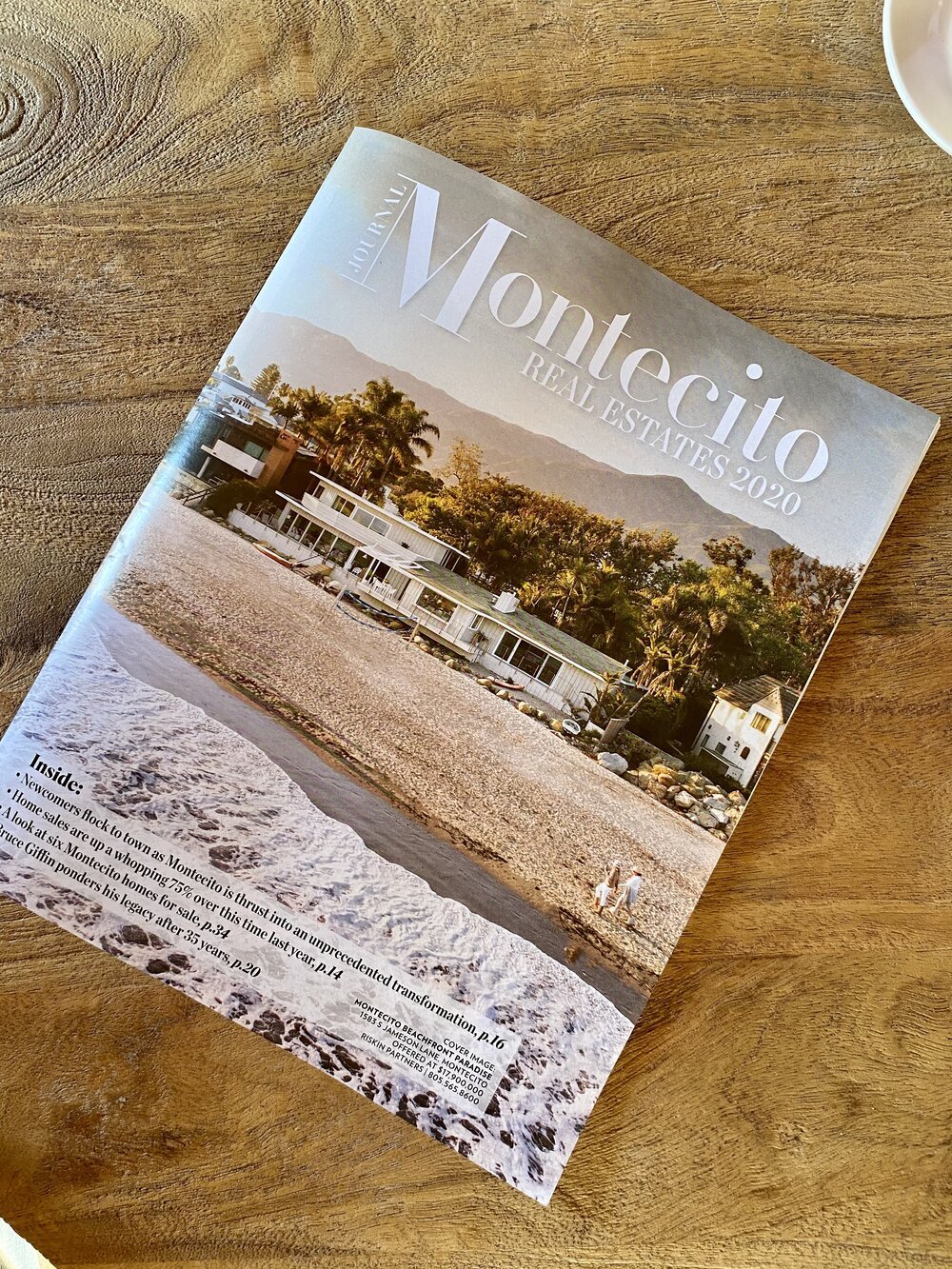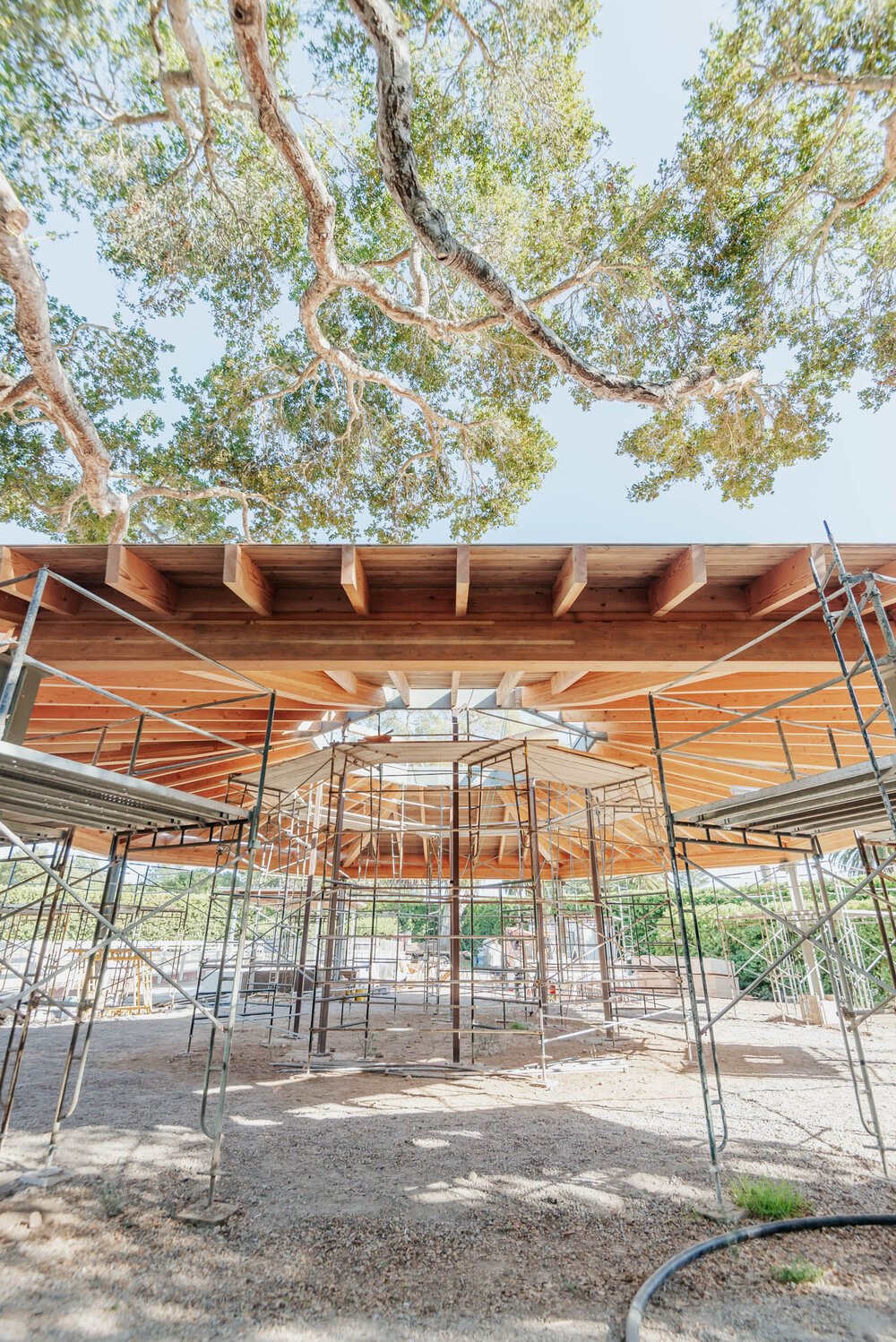Press: Built to Last - Giffin & Crane feature in Montecito Journal
Thanks to Bruce Giffin, Geoff Crane, Eric Carlstedt, and Derek Shue of Giffin & Crane for sharing their story with me. As a student of business, I found immense value in their thoughts. Building a business is commendable. Building one that lasts decades and then carries on to the next generation is a rarity, especially in construction.
As business owners, we bake ourselves into everything. If we’re gone, so is the business. It takes focused intention to develop a business that can thrive without you. This article digs into some of the key ingredients to the success of Giffin & Crane, arguably one of the best residential builders on the Central Coast. Thanks to the Montecito Journal for picking up this story. Beautiful photos are by Riley Yahr. Enjoy!
As he approaches retirement, Bruce Giffin, one of Santa Barbara’s top contractors, ponders his legacy.
Construction is known for being a tough business. Competition is high, margins are low, cash flow swings in both directions, and a shortage of skilled workers makes the industry all the more precarious. As he approaches his 35th anniversary in the business, Bruce Giffin seems to handle all the adversity with a calm and gracious demeanor. The founder of Giffin & Crane, one of California’s most reputable, high-end residential builders, is walking me through an equestrian facility project at an idyllic oceanfront property in Santa Barbara. At the top of this property sits a group of 93-year-old Spanish hacienda-style homes, complete with their iconic white stucco walls and red-tiled roofs.
Bruce Giffin, one of Santa Barbara’s top contractors, is approaching retirement after 35 years in the business (Photo credit: Riley Yahr)
Giffin first worked on them to repair some water damage to the otherwise structurally sound homes. Across the way is a nearly finished 12-stall horse barn that was built to match the aged character of the residences and their deliberately imperfect roof tiles. From there, the property gently slopes toward the ocean, where several horses and a donkey, all rescues, graze in their paddock. At the bottom of the hill is a carousel-like octagonal building with its raw framing exposed, soon to become a covered equestrian round pen. This is the eleventh project Giffin has built for this client, and after officially stepping away from the operations of his company in January of this year, it will be his last project before retirement.
Geoff Crane, who founded the business with Giffin in 1985, is joining us, grinning from ear to ear. When I asked Giffin what has surprised him the most since they founded the company, he told me: “That we started out as two young guys, swinging hammers during the day and doing estimates at night, and somehow ended up here.”
(Photo credit: Riley Yahr)
Crane chimed in, “And I never once cheated on him!” garnering laughter from the group.
Also present are Eric Carlstedt, 35, and Derek Shue, 38, who have spent more than a decade with the company and will be officially taking over in the new year. While Giffin stepped away from the operations in January, Crane plans to stay on for at least a few more years and can always imagine being involved in some capacity.
Giffin continued, “We were friends first. We wanted to start our own companies around the same time and figured it made more sense to work together than to compete with one another. We decided early on that we would do the best work no matter what, we would know our numbers, and we would own our mistakes. To this day, we’ve held onto those values. Geoff and I are very different people, but when aligned, have been powerful together.”
Two generations of builders (from left): Eric Carlstedt, Bruce Giffin, Geoff Crane, and Derek Shue (Photo credit: Riley Yahr)
Giffin estimates their business has done more than $360 million across 3,000 projects and 600 clients since the company’s inception. It is projected to do $25 million in custom work this year alone.
Giffin’s commitment to building the best project possible is evident down to his last. Being an octagonal shape, each corner of the round pen has a 67.5-degree angle, which no saw is set up to do, so every cut must be made by hand. Structural engineering required that steel beams be put in place towards the pitch of the roof. Each beam has a gap at the top, allowing up to one inch of space for the structure to settle. This started a wager between the builders, engineers, and the architect Britt Jewett, but in the end, the structure settled just 1/16 of an inch.
Giffin’s last project is this carousel-like octagonal building with its raw framing exposed, soon to become a covered equestrian round pen (Photo credit: Riley Yahr)
Being an octagonal shape, each corner of the round pen has a 67.5-degree angle, which no saw is set up to do, so every cut must be made by hand.
Talking with the company’s successors, it’s obvious they have no plans to sit on their laurels, and their enthusiasm for the future is infectious.
“We realize it’s a unique opportunity to take the reins of a company with this kind of prestige in any industry, but extremely rare in construction,” Carlstedt said. “The guys that used to pat me on the head when I was sweeping up sawdust are still here. We could never hold on to the culture Geoff and Bruce have created if we didn’t approach this team with the utmost respect and have their respect in return.”
Shue said that, like Giffin and Crane, their partnership would contribute to their future success, with Shue’s strengths lying in the logistics of the build and Carlstedt’s more in the numbers. Their plans involve bringing in more technology, refining their systems to be even more efficient, and allowing space and time to train the next generation of builders. They are playing the long game and making decisions with the generation that will come after them already in mind.
From left to right, Derek Shue, Eric Carlstedt, Giffin & Crane successors.
What follows here is the rest of our interview, where Giffin reflects on his career and ponders his legacy.
Q. What has been the most rewarding part of your career?
A. People keep asking what I will miss, and it’s absolutely the relationships we’ve made. One of my proudest moments was at our 25th Anniversary Party when we had 400 guests come together – half were in the trade, and half were our clients – and everyone had a great time. I love seeing the overlap. We have craftsmen from some of the most interior parts of Mexico working with our clients, who are the most affluent people in the world.
Q. What would you say is the biggest key to your success?
A. Talking to other people in similar situations. In 1988 when we were struggling, my mom encouraged me to find the local builders’ associations. So, I got myself invited to a dinner and realized the power that can come from collaboration and communication. I went on to become the president of the Santa Barbara Contractors Association. Six months later, we had the Painted Cave Fire. Over 500 homes burned in one night, and we helped people put their lives back together. Then, in the ‘90s, we had a horrible recession. We were all saying, “Stay alive until ‘95, it will be heaven in ‘97.” We went from 50 people to two and nine months without a contract. I joined the Custom Builders Symposium, put on by Builder Magazine, and from there, joined NAHB’s Builder20 Clubs peer groups locally. We got the mailing list of all the local traders and put on a lunch to discuss how we could work together to get through this time. It doesn’t matter if you’re the architect, builder, engineer, or interior designer – we realized the bottom line was that every industry wanted respect. We developed an ad hoc concept that would allow the contractor to come into the conversation with the architect earlier and help with design engineering and budgets. To this day, that concept is a key to our success on any project.
Across the way is a nearly finished 12-stall horse barn that was built to match the aged character of the residences and their deliberately imperfect roof tiles.
Q. What has been the hardest lesson to learn?
A. I’ve had to learn that my job isn’t to make people happy. When I was younger, I thought it was. Along the way, I learned there are some people you just can’t make happy, even if you built them an amazingly beautiful home. My job is to build the best project possible to my satisfaction. If that happens to make people happy, well, then that’s a huge plus, but it’s not my job.
Q. How did you create a company that is thriving past your retirement?
A. Being smart has nothing to do with it. When I was heading up different groups and organizations, I watched a lot of smart people go out of business. And I knew I couldn’t leave it to a CPA to plan our future because they are better at looking in the rearview mirror. An ESOP (Employee Stock Ownership Plan) wasn’t for us, and someone outside of the company would change the culture. We came up with a plan where two key employees could buy it over time, and ideally, it would provide for them what it did for Geoff and me. This was eight years in the making, and it’s taken a conscious effort to let go. It’s great to be the guy with the answers, but if you’ve built a business that can’t run without you, you don’t have a business; you have a job – and what’s worst of all, you’re working for an idiot.
Photo by Riley Yahr
Q. What is next for you?
A. I’ve learned a lot about leadership from being on boards and from being around folks who know how to get things done. I’ve been able to share that with our company and uncovered it as a passion of mine. Today, I am announcing my next venture, Giffin Built, a Craftsman / Builder / Contractor Mentor & Coach LLC. I’m holding ten spots for builders, all outside of the area, so as not to infringe on our non-competition clause. As far as Giffin & Crane, I would love nothing more than for it to last another generation or two or three...
Giffin stops, interrupting his thought to comment on the horses who have started a canter around their paddock: “Well, that’s beautiful to watch that isn’t it? Yep, and I still have one or two more books to write.”
Written by Jade Flogerzi, Clever Punch
Photos by Riley Yahr










